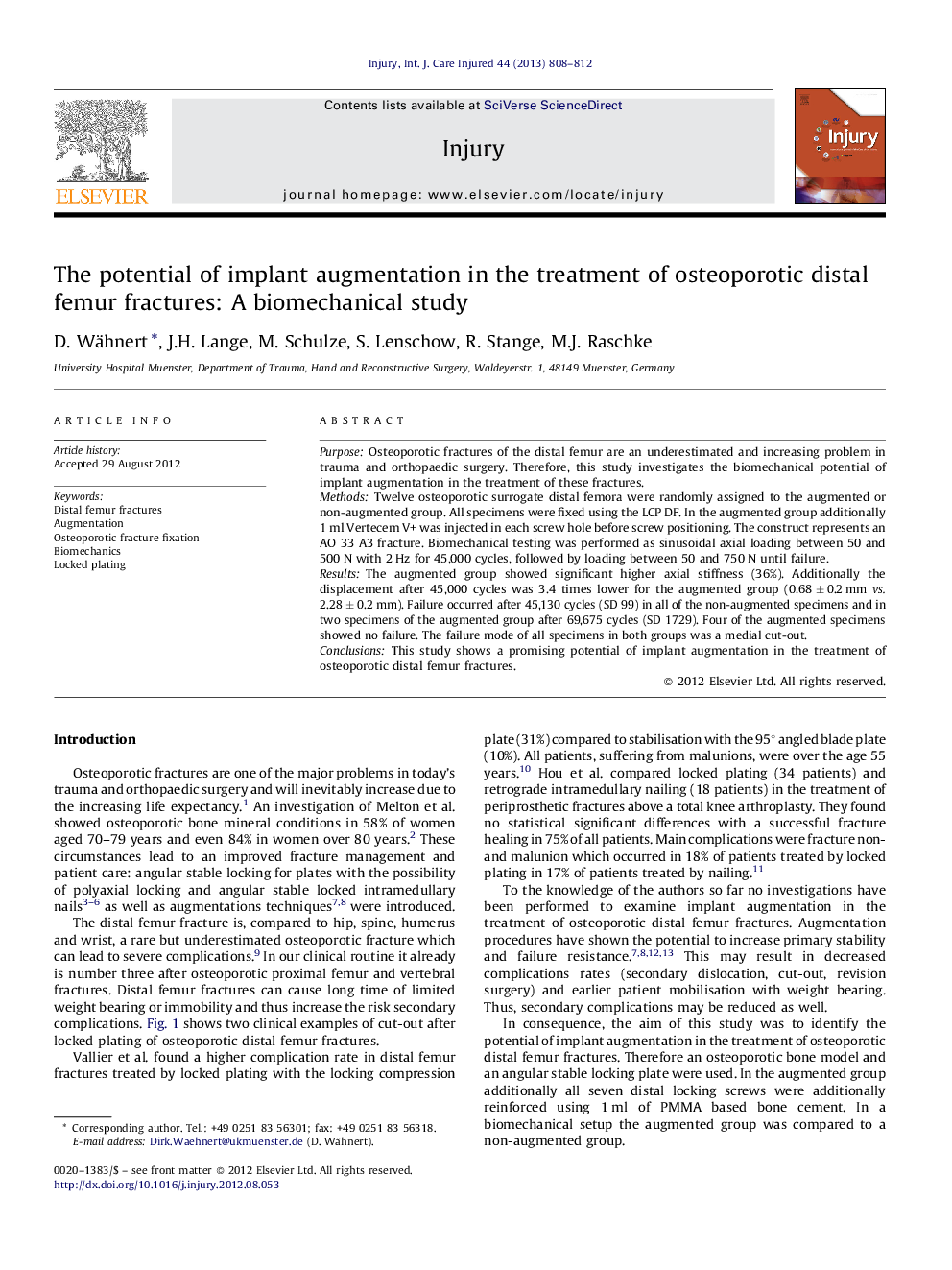| Article ID | Journal | Published Year | Pages | File Type |
|---|---|---|---|---|
| 3240657 | Injury | 2013 | 5 Pages |
PurposeOsteoporotic fractures of the distal femur are an underestimated and increasing problem in trauma and orthopaedic surgery. Therefore, this study investigates the biomechanical potential of implant augmentation in the treatment of these fractures.MethodsTwelve osteoporotic surrogate distal femora were randomly assigned to the augmented or non-augmented group. All specimens were fixed using the LCP DF. In the augmented group additionally 1 ml Vertecem V+ was injected in each screw hole before screw positioning. The construct represents an AO 33 A3 fracture. Biomechanical testing was performed as sinusoidal axial loading between 50 and 500 N with 2 Hz for 45,000 cycles, followed by loading between 50 and 750 N until failure.ResultsThe augmented group showed significant higher axial stiffness (36%). Additionally the displacement after 45,000 cycles was 3.4 times lower for the augmented group (0.68 ± 0.2 mm vs. 2.28 ± 0.2 mm). Failure occurred after 45,130 cycles (SD 99) in all of the non-augmented specimens and in two specimens of the augmented group after 69,675 cycles (SD 1729). Four of the augmented specimens showed no failure. The failure mode of all specimens in both groups was a medial cut-out.ConclusionsThis study shows a promising potential of implant augmentation in the treatment of osteoporotic distal femur fractures.
